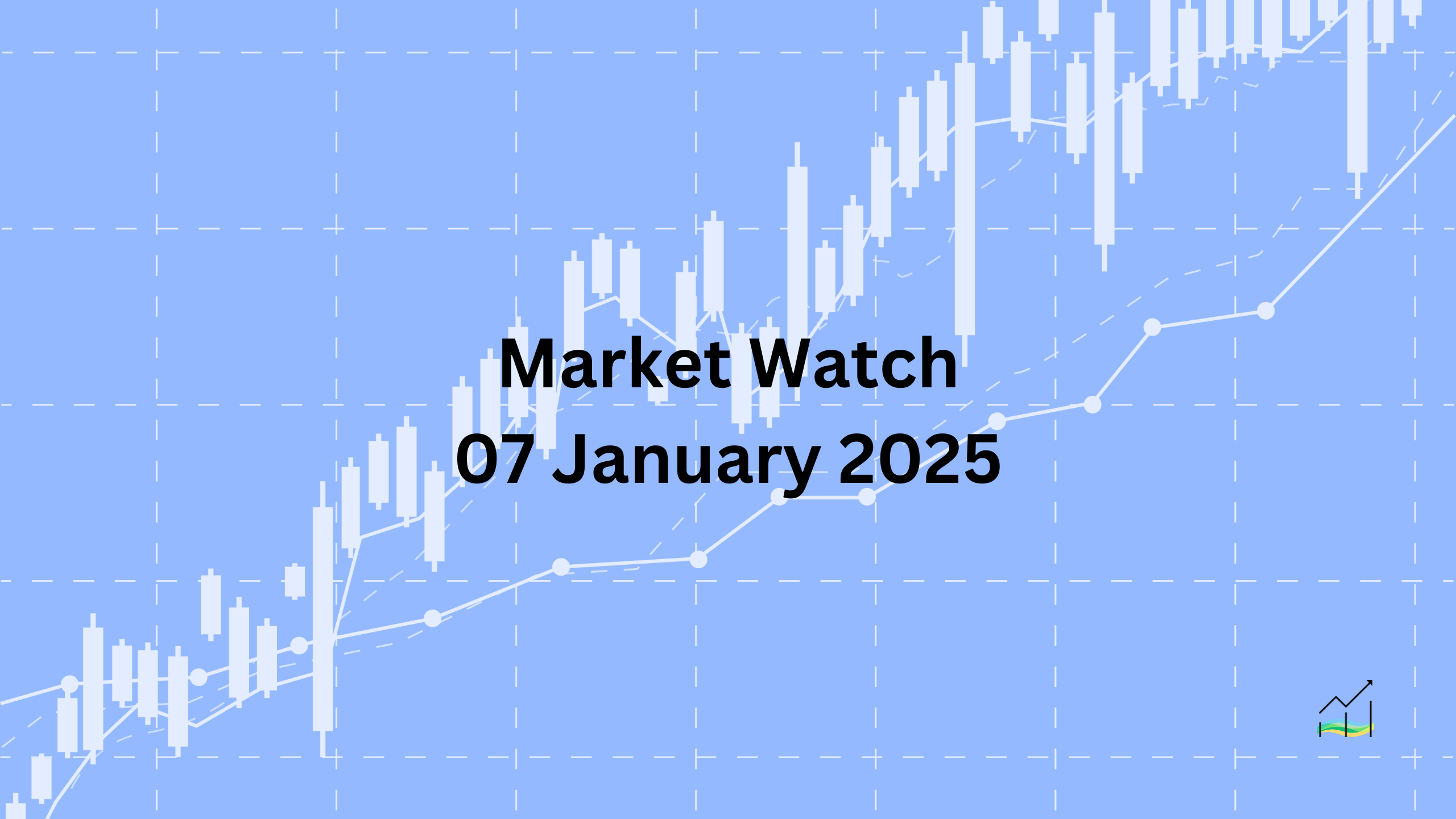07/01/2025 Market Watch

Tariff Application, U.S. Dollar Pullback
The foreign exchange market continues to show corrective movements today, following recent volatility sparked by the US President-elect's rebuttal of a narrowed tariff application. Antipodean currencies, which had been under pressure last year, are gaining strength alongside most G10 currencies, staying within yesterday's range. However, the yen and Swiss franc are weaker, posting small losses around midday in Europe. Key economic reports from the US, including trade data, JOLTS, and ISM services, along with a $39 billion 10-year note auction, are on the calendar today. Meanwhile, speculation about Mark Carney potentially running to lead Canada's Liberal Party has emerged, though its market impact is currently minimal.
In the Asia Pacific, equity markets mostly rallied, with Japan's Nikkei up nearly 2%. Conversely, the Hang Seng dropped 1.2%, affected by the US blacklisting Tencent and ongoing liquidity issues in Hong Kong. This reflects a shift in the US's restrictive approach, which seems to be intensifying. European stocks, represented by the Stoxx 600, are building on gains, while US futures show slight improvements. European 10-year yields are up by 2-4 basis points, and the US 10-year Treasury yield has increased to 4.64%. Gold remains steady at $2643, with minimal reaction to the news of the PBOC's recent gold purchases. February WTI crude is rebounding, trading near $73.75 as the US session approaches.
United States of America
The US dollar saw a significant pullback yesterday, erasing much of the previous week's gains. The Dollar Index dropped by 0.8%, marking its largest decline since late November. After briefly climbing to around 108.40 earlier today, it fell back below last year's closing level of 108.00. Support is identified in the 107.50-75 range, and a further drop could push it toward 107.00. This movement appears to be driven by position adjustments ahead of the upcoming employment report later this week.
Today's economic reports are expected to highlight a wider US trade deficit for November, driven by higher imports of industrial supplies and capital equipment, while consumer goods imports declined. Additionally, a slight increase in job openings from the JOLTS report and a modest rise in the ISM services PMI are anticipated. Notably, the S&P version of the services PMI rose to 58.5 from 56.1, hitting a new cyclical high.
Key Points:
- Dollar Index fell 0.8%, the largest drop since November.
- Brief recovery to 108.40, now below 108.00 with support at 107.50-75.
- US trade deficit expected to widen due to increased industrial imports.
- Anticipation of higher JOLTS job openings and a rise in ISM services PMI.
- S&P services PMI increased to 58.5, marking a new cyclical high.
Australia
The Australian dollar, which hit a low near $0.6180 at the end of 2024, briefly rose above $0.6300 yesterday before retreating to around $0.6235. This level has held, and the currency is now approaching $0.6290. Australia's November CPI report is due tomorrow, with expectations for a slight increase to 2.2%, up from 2.1% in September and October, though still significantly lower than the 4.3% seen in November 2023.
The swaps market indicates the Reserve Bank of Australia (RBA) might cut rates by about 70 basis points, compared to a projected 40 basis point cut by the US Federal Reserve. Currently, Australia's two-year yield is about 34 basis points lower than the US equivalent, narrowing from a 50 basis point gap in mid-December, the largest since last July. A rise above $0.6315 could lead to a correction toward $0.6350.
Key Points:
- Australian dollar rose above $0.6300 but retreated to $0.6235, now near $0.6290.
- November CPI expected to rise to 2.2%.
- RBA seen cutting rates by 70 bp; Fed by 40 bp.
- Australia's two-year yield 34 bp below US, down from a 50 bp gap in December.
- A move above $0.6315 could lead to $0.6350.
Canada
Prime Minister Trudeau has announced his intention to step down as the leader of the Liberal Party and will resign as prime minister once a successor is chosen. During this transition, Parliament will be suspended until March 24. The new leader will assume the role of prime minister, but with a general election likely to follow, the position could be challenging as the Conservatives currently lead in the polls.
Yesterday, the US dollar reached CAD1.4280 in early North American trading but rebounded to nearly CAD1.4380 following Trump's renewed tariff threat. Today, it has remained below CAD1.4350, hovering around CAD1.4300 in European trading. Former Bank of Canada and Bank of England Governor Mark Carney is considering a run for the leadership of the Liberal Party. Canada is set to release its November merchandise trade and Ivey PMI reports, though these typically have minimal market impact. Canada posted a C$740 million deficit in the first ten months of 2024 but maintains a trade surplus with the US. The drop in Canada’s Composite December PMI to 49.0 from 51.5 suggests potential downside risks for the Ivey survey.
Key Points:
- Trudeau to step down as Liberal leader; Parliament suspended until March 24.
- US dollar rebounded to nearly CAD1.4380, now around CAD1.4300.
- Mark Carney considering running for Liberal leadership.
- Canada reports merchandise trade and Ivey PMI, with limited market impact.
- Canada's trade deficit with other countries but surplus with the US.
- December Composite PMI decline indicates risks for the Ivey survey.
China
The US dollar fluctuated within a broad range against the offshore yuan yesterday but stayed within the boundaries set on December 31 (~CNH7.3055-CNH7.3695). Today, it remains within that range. The People's Bank of China (PBOC) slightly lowered the dollar's fix to CNY7.1879 from CNY7.1876, marking the first adjustment in seven sessions. The greenback reached nearly CNH7.3650 yesterday and is now consolidating.
The PBOC has also tightened the offshore yuan market in Hong Kong, with the overnight HIBOR rate for the offshore yuan surging to 8.1%, the highest since June 2021. The one-month HIBOR rose to 4.4%, the highest since April last year. China's foreign reserves dropped by $63.50 billion, the largest decrease since April 2022, indicating a shift away from recycling its trade surplus into US Treasuries. China's Treasury holdings fell to $760.1 billion as of October, the lowest since 2009. Additionally, the PBOC has resumed gold purchases for the second month in a row after a six-month hiatus.
Key Points:
- US dollar stayed within the December 31 range against the offshore yuan.
- PBOC slightly lowered the dollar's fix for the first time in seven sessions.
- PBOC engineered a squeeze in the offshore yuan market, raising HIBOR rates.
- China's reserves fell by $63.50 billion, the largest drop since April 2022.
- China's US Treasury holdings are at their lowest since 2009.
- PBOC resumed gold purchases for the second consecutive month.
Europe
The euro advanced slightly above $1.0435 yesterday, retracing half of its losses since December 6, following the last US employment report. It briefly surpassed the 20-day moving average for the first time since December 18. The next key retracement level (61.8%) is near $1.0475. Position adjustments ahead of the upcoming US jobs report are likely influenced by the declining US two-year premium over Germany, which has been falling since December 20, reaching about 206 basis points yesterday, down from a peak of 233 basis points on December 18.
Spain's December CPI, reported at the end of last year, and Germany's, reported yesterday, pointed to an overall increase in the eurozone's CPI, which rose by 0.4% to 2.4% year-over-year. The core rate remained flat at 2.7%, with energy prices contributing significantly to the increase. Looking ahead, as the high inflation rates from February to April last year drop out of the year-over-year comparisons, eurozone inflation is expected to fall below 2%. Given the weak economic momentum, the European Central Bank (ECB) is unlikely to be deterred from implementing a 25 basis point rate cut at the end of the month.
Key Points:
- Euro retraced half of its losses since December 6, next target near $1.0475.
- US two-year premium over Germany fell to 206 basis points, from 233 basis points on December 18.
- Eurozone CPI increased to 2.4%, core rate flat at 2.7%, driven by energy prices.
- Inflation is expected to fall below 2% as high rates from early 2023 drop out of comparisons.
- ECB likely to proceed with a 25 basis point rate cut amid weak economic conditions.
Japan
The US dollar fluctuated within its two-week trading range against the yen yesterday, moving between JPY156 and JPY158. Although it crossed both sides of Friday’s holiday-thinned range, it closed relatively unchanged, neutralizing any significant technical signals. During the local session today, the dollar was bid up to about JPY158.40, marking a new high since July. However, selling pressure emerged, pulling it back to around JPY157.40 by early European trading.
Japan's 10-year bond auction was well received, with a bid-to-cover ratio of 3.36, the highest since last October, indicating strong demand.
Key Points:
- Dollar fluctuated between JPY156 and JPY158, closing largely unchanged.
- Reached JPY158.40 today before retreating to JPY157.40.
- Japan’s 10-year bond auction saw strong demand, with a bid-to-cover ratio of 3.36.
United Kingdom
Sterling surged to approximately $1.2550 yesterday, reaching a four-day high. It crossed the 38.2% retracement of its decline from the $1.2880 level following the December 6 US jobs report. Today, it neared the next retracement level at 50% around $1.2580, slightly above the 20-day moving average. A move above $1.2610 might trigger further short covering.
The S&P confirmed that the UK's composite output, encompassing manufacturing and services, declined for the fourth consecutive month in December, marking the lowest level since October 2023. Additionally, the December construction PMI, which has fluctuated monthly since mid-last year, fell to 53.3, erasing the gains made from August to November.
Key Points:
- Sterling hit $1.2550, nearing a 50% retracement at $1.2580.
- A rise above $1.2610 could prompt more short covering.
- UK composite output declined for the fourth month, hitting its lowest since October 2023.
- December construction PMI fell to 53.3, undoing gains from the previous months.
© 2025 SKONE Enterprise (003319453-V). All rights reserved.
The content on this site is for informational purposes only and does not constitute financial advice.


